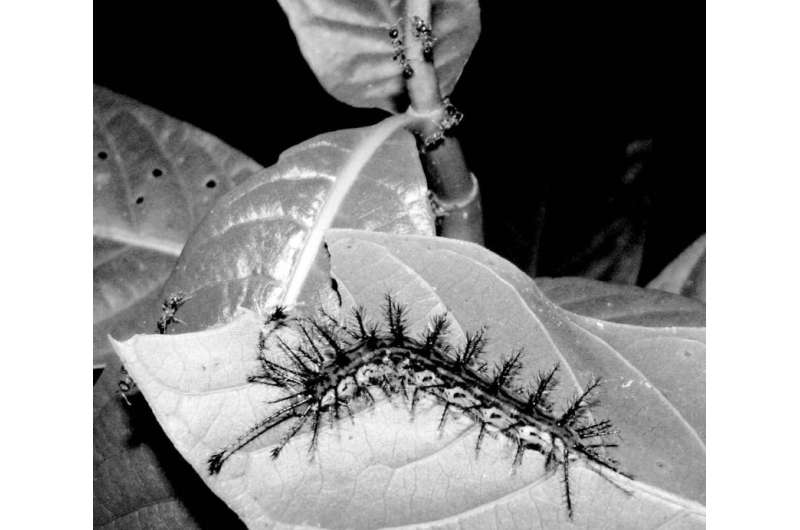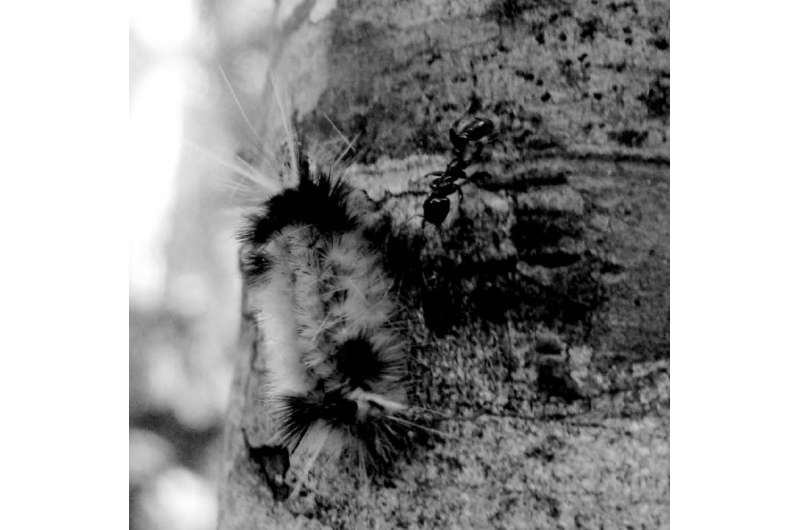Guardian ants: How far does the protection of a plant-ant species to its specific host go?

Seemingly helpless against their much more lively natural enemies, plants have actually come up with a wide range of defences. In the present research, published in the open-access Journal of Hymenoptera Research, Dr. Adriana Sanchez, Universidad del Rosario, Colombia, and Edwin Bellota, Texas A&M University, USA, focus on the mutualistic relationship developed between a specific Neotropical knotweed and an ant species. During a series of ant-exclusion experiments the scientists observed and subsequently reported an aggressive and highly protective behaviour.
In order to assess the extent of protection these plant-ants provide their exclusive host with, the researchers compared the percentage of herbivory between control plants and experimental ones, which had their resident ants removed. The unambiguous results showed a 15-fold increase in the herbivory in the latter group, which kept on growing even further as the time progressed.
Normally, the studied ants patrol their hosts during both day and night at temperatures sometimes as low as 13C. Every time they found a herbivore, they were seen to attack it aggressively by biting and stinging.
"When an ant encountered a caterpillar, a worker approached and detected it with its antennae, and then recruited more workers. Typically more than 10 workers were recruited around the intruder in less than five minutes," shared their observations the researchers. "Several workers harassed the herbivore by stinging or biting, until it dropped off the plant. The caterpillars usually hung by a silk thread and attempted to move back onto the plant. However, individuals of Pseudomyrmex continued to chase them until they dropped again. This cycle was repeated several times."
While patrolling, they were noticed to remove any found debris from the top of the leaves. When they failed to find any signs of mosses, fungi or lichens on the sampled saplings, the scientists suggested that the ants not only protect their host from herbivores, but also from various disease-causing agents.

Plant vitality, growth and reproduction are seriously threatened by herbivores such as, in the case of the hereby studied knotweed, Triplaris americana, caterpillars and grasshoppers. Fighting for their life, plants use structural defenses, toxins, digestibility-reducing compounds, or mutualistic relationship with the enemies of their herbivores.
The herein researched Neotropical plant have found its way of survival through becoming the only host to the ant species Pseudomyrmex dendroicus, characterised with remarkable eyes, light brown body and potent venom, injected through a well-developed sting. In its turn, the knotweed shelters their entire colony in its hollow stems while another symbiont, scale insects, feeds them with the sugary sticky liquid it secrets on digesting plant sap.
More information: Adriana Sanchez et al. Protection against herbivory in the mutualism between Pseudomyrmex dendroicus (Formicidae) and Triplaris americana (Polygonaceae), Journal of Hymenoptera Research (2015). DOI: 10.3897/JHR.46.5518
Journal information: Journal of Hymenoptera Research
Provided by Pensoft Publishers


















